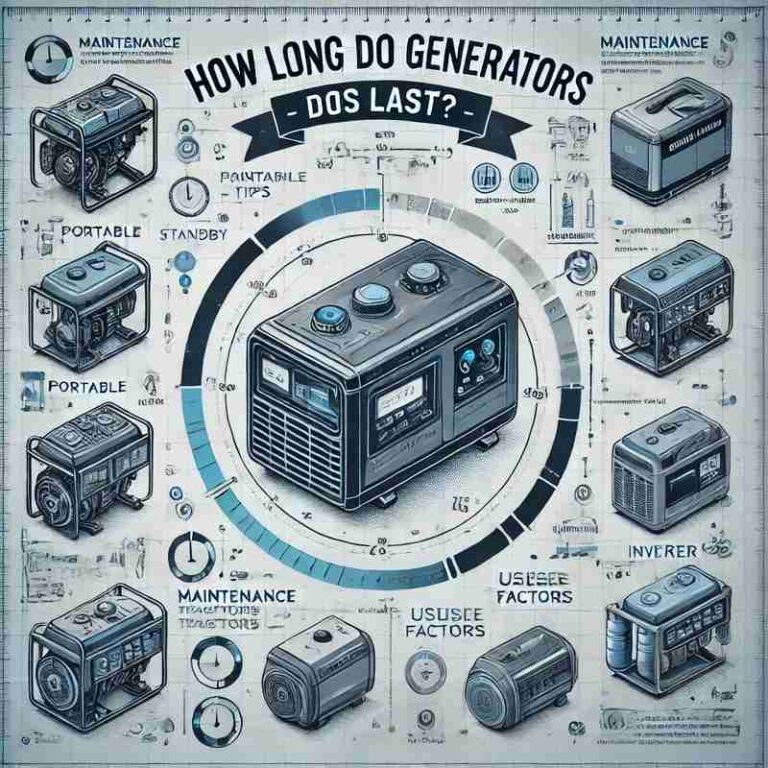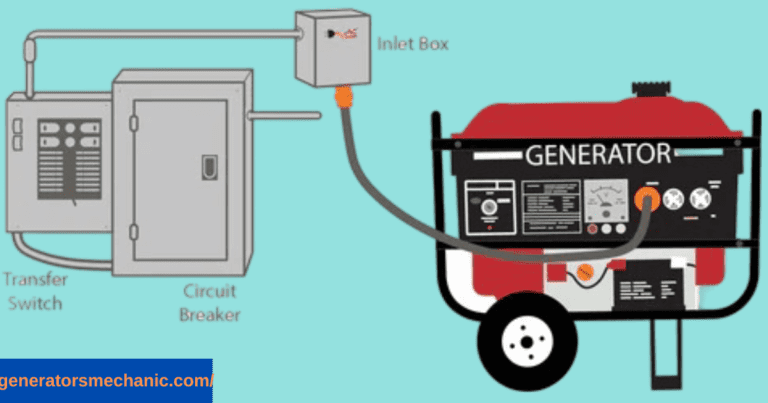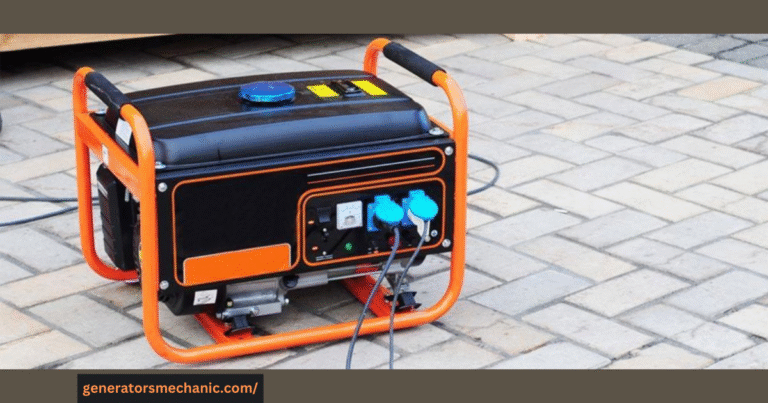Generator Backfiring – 12 Powerful Fixes to Instantly Solve Backfire Issues
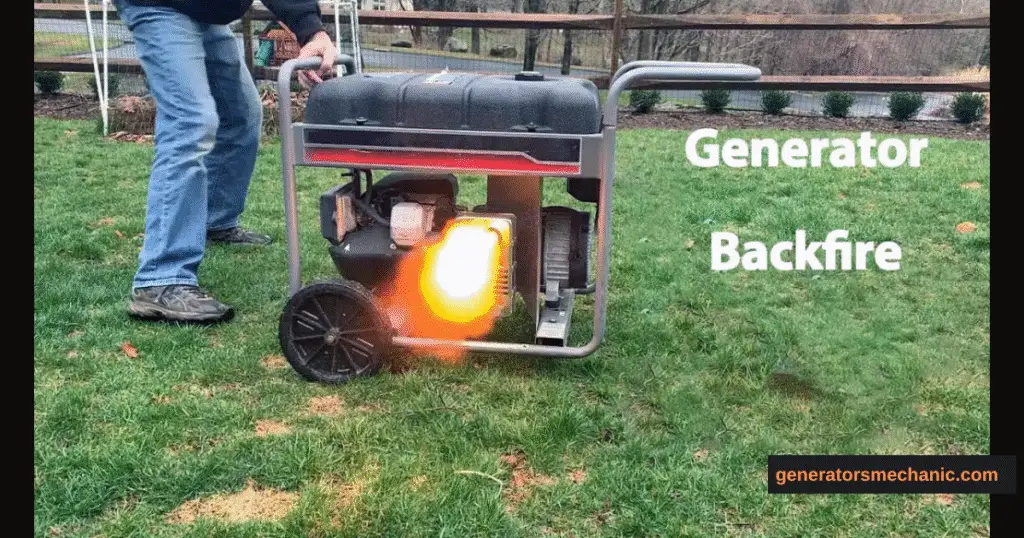
In daily operations, even essential equipment such as generators can experience malfunctions and irregularities. One particularly concerning and potentially hazardous issue is referred to as “generator backfiring.”
When attempting to start your generator, this abrupt ignition of unburned fuel within the exhaust system can produce a generator popping sound and, more critically, may inflict considerable damage to the generator, pose serious safety risks, and render it unusable at crucial moments.
Comprehending the phenomenon of generator backfiring, including its causes and remedies, is vital for the safe and effective use of your generator. This article serves as a valuable resource to assist you in addressing the potential risks associated with generator backfires. Stay connected with China BISON to equip yourself with the necessary knowledge to maintain your generator’s efficiency, safety, and longevity.
Common causes of generator backfire
Experiencing a generator backfiring can be alarming, especially when you’re relying on it during a power outage or an important task. Backfiring happens when unburned fuel ignites outside the engine’s combustion chamber, often resulting in loud popping sounds. It’s not only annoying but can indicate underlying issues that need immediate attention.
One of the most common reasons for a generator backfiring while running is a dirty or clogged carburetor, which disrupts the air-fuel mixture. Faulty spark plugs, incorrect ignition timing, and air filter blockages are also major culprits. Additionally, using stale fuel or running the generator under heavy load without proper maintenance can trigger frequent backfires, impacting performance and engine health.
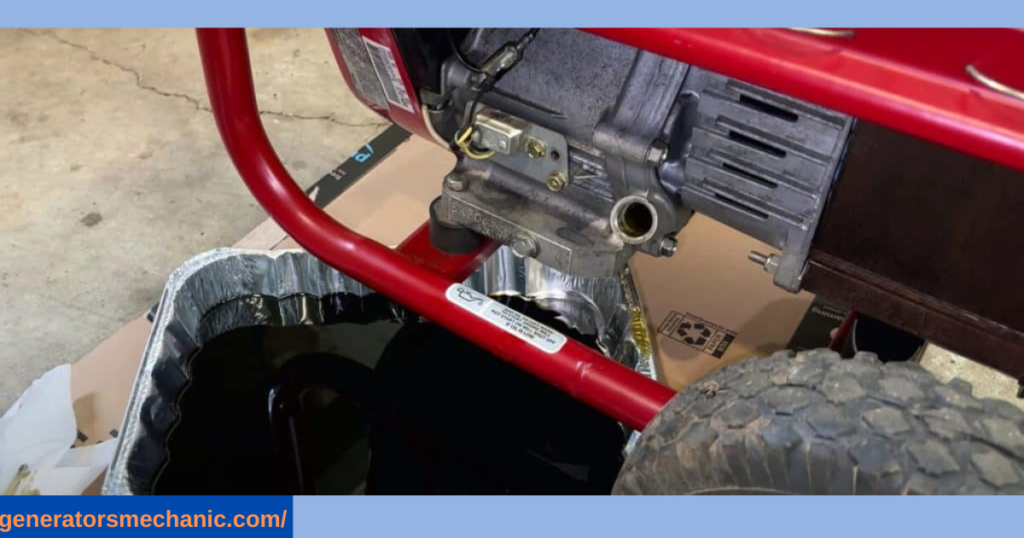
Understanding these causes helps you diagnose the problem early and avoid potential damage to your generator’s engine. Regular maintenance, using clean fuel, and keeping filters and spark plugs in check are key preventive steps.
Although generator backfires can occur without warning, they are typically indicative of an underlying issue within the generator system. Below are 12 primary factors that can lead to this occurrence:
1-low oil fuel
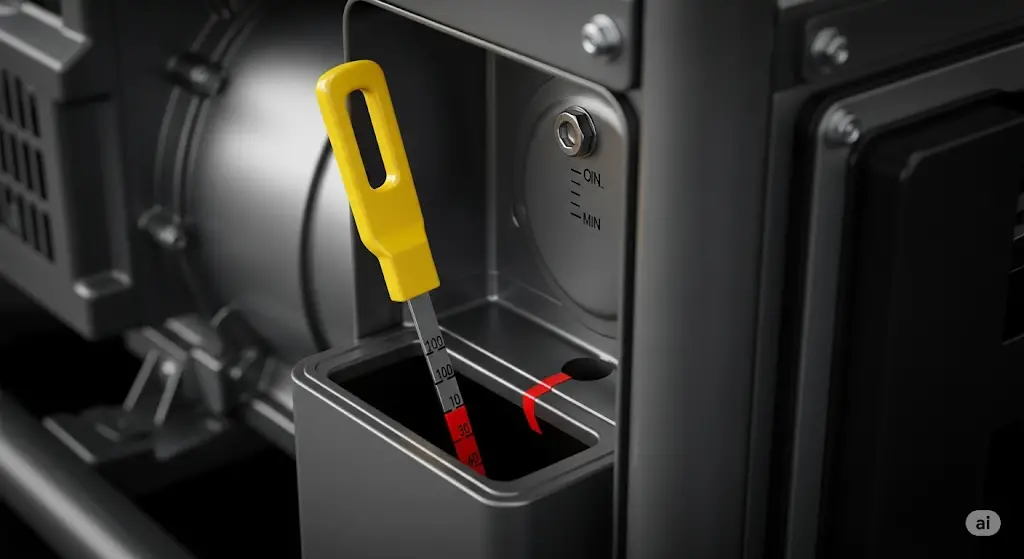
Proper lubrication of your generator is essential not only for reducing friction but also for cooling various engine components. However, it is important to avoid over-lubrication, as this may diminish efficiency.
If your generator backfires during startup attempts and not starting, inspect the dipstick. A low oil level can lead to overheating, which may trigger backfiring.
2-Old or dirty fuel
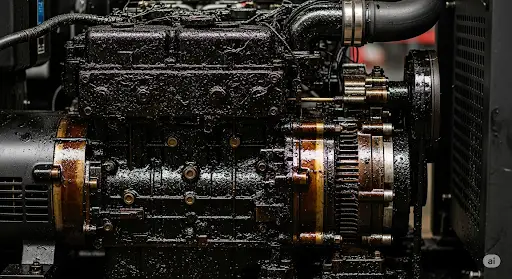
The degradation or contamination of fuel line issues in generator can result in inefficient combustion, potentially causing the fuel to ignite in an unintended area within the generator.
When fuel remains stagnant for an extended period, its molecular structure may deteriorate, leading to an imbalance in the fuel-air ratio and subsequent backfiring.
In cases where fuel becomes contaminated or mixes with water or other impurities, the fuel-to-air ratio is disrupted, resulting in subpar engine performance and, in severe instances, backfiring.
To avoid backfiring and to ensure the generator operates at peak efficiency, it is essential to consistently use fresh, high-quality fuel. It is advisable to replace the gasoline every 3 to 6 months to enhance performance.
3-open throttle valve
The generator is equipped with a choke valve that restricts air intake before engine ignition. If this valve is open, the internal combustion engine will not receive sufficient fuel for ignition, resulting in backfiring and failure to start.
4-closed fuel valve
The fuel valve regulates the flow of fuel from the tank to the combustion system. A closed fuel valve indicates that the engine is not receiving adequate fuel, which can create a lean condition, leading to ineffective operation.
5-blocked or damaged fuel pipeline
A closed fuel valve is just one of several factors that can hinder the generator’s fuel supply. A clogged, pinched, or leaking fuel line can also prevent enough fuel from reaching the combustion system.
Blockages may arise from debris accumulating in the fuel tank and obstructing the fuel lines. Additionally, cracks in the fuel lines may develop over time due to prolonged exposure to various elements.
It is necessary to replace any leaking fuel lines, while blockages can often be resolved by flushing the tank and fuel line.
6-blocked carburetor
If a fuel-fired generator is not operated for an extended period, the fuel may clog the carburetor.
As previously noted, fuel left in the tank can deteriorate and become non-flammable. If this degraded fuel enters the carburetor, it can obstruct it, preventing new combustible fuel from flowing in. When the engine attempts to ignite the degraded fuel, backfiring may occur.
To prevent such issues, it is advisable to empty the fuel tank before storing the generator. If you choose to leave fuel in the generator, it is important to operate it at least once a month.
7-lean air-fuel ratio
An imbalance in the air-fuel mixture, particularly in lean conditions, can result in incomplete combustion, leading to excess fuel being expelled into the exhaust and potentially ignited there, which may cause generator misfires under load. The lean fuel-to-air mixture in your generator may result from a dirty, aged, or improperly calibrated carburetor.
8-Defective spark plug
The spark plug problem in generator is responsible for initiating combustion. Over time, these components can become worn and contaminated, leading to improper ignition timing or failure to ignite altogether. This situation can result in unburned fuel accumulating in the exhaust system, which may ultimately cause backfiring.
9-Premature combustion
If the ignition timing is misaligned, combustion may occur too early, potentially resulting in a backfire. This issue can stem from electrical or mechanical faults or a malfunctioning ignition system.
10-Addressing generator backfiring
To resolve backfiring in your generator, begin by identifying the root cause, which is likely one of the issues mentioned above. Additionally, evaluate whether the backfiring occurs when transitioning from higher RPM to lower RPM during shutdown, as this may not require immediate intervention.
However, if backfiring occurs during startup or while the generator is in operation, it is likely in need of repair.
The following steps will assist you in rectifying generator backfiring:
11-Carburetor and spark plug:
If the issue persists, it may indicate an incorrect air-fuel mixture ratio. In such cases, thoroughly clean the carburetor. A malfunctioning spark plug could also contribute to the problem. Proper cleaning can resolve approximately 80% of generator backfiring issues. If the generator will not be utilized for an extended duration, consider draining the carburetor.
12-Valve:
When backfiring occurs during startup, pay attention to the valve. Potential issues may include a decompressed spring, inadequate clearance between the valve stem and pushrods, or a bent rocker arm. Various complications may arise from the valve face within the combustion chamber.
How Do You Fix a Backfire?
Experiencing a generator backfiring causes during shutdown can be alarming, but it’s often a sign of underlying issues that need attention. Backfiring typically occurs when unburned fuel ignites in the exhaust system, resulting in a loud popping sound. It’s important to understand the common generator backfiring causes, such as incorrect air-fuel mixture, faulty spark plugs, or timing problems.
If your generator backfires while shutting down, the first step is to safely turn off the fuel supply and let the engine cool down completely. Check and clean or replace spark plugs, inspect the air filter for blockages, and ensure the carburetor is adjusted correctly. If backfiring persists, it may indicate a deeper mechanical issue that requires professional servicing to prevent further damage.
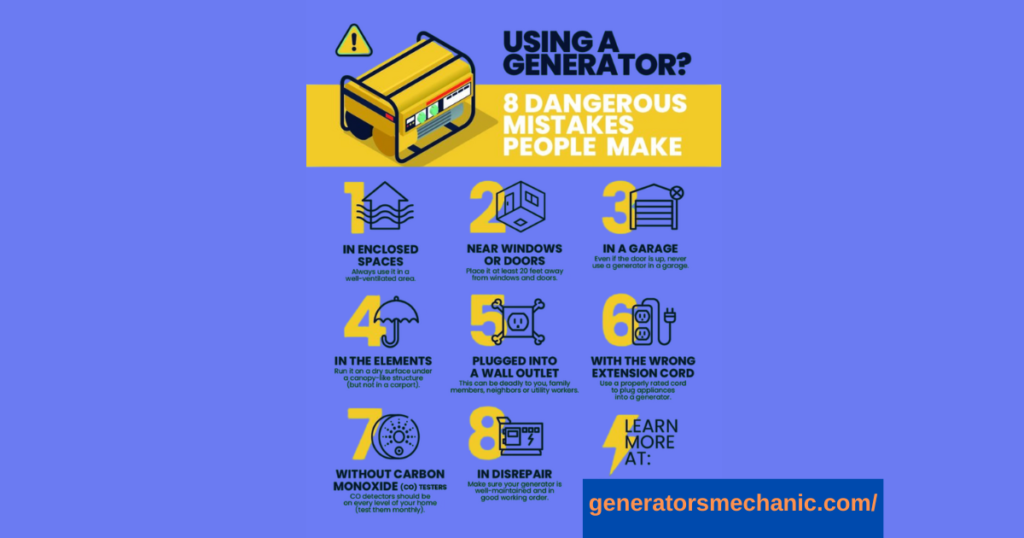
First, disconnect all loads and allow the generator to operate in ECO-MODE or idle mode for several minutes. This practice helps to minimize the chances of backfiring by facilitating normal combustion processes.
Conclusions:
In conclusion, backfiring in generators is not merely an operational issue; it also poses significant safety hazards. Beyond causing mechanical damage, backfires and subsequent minor explosions can potentially ignite larger fires, particularly if the generator is situated near combustible materials.
BISON guides addressing counterproductive issues in this manual. It is crucial to adhere to the recommendations outlined and to implement the necessary safety precautions.
We trust that you will find this guide beneficial. Thank you for your attention, and we encourage you to explore our related articles for additional valuable insights on generator maintenance.
If you need generator service then call him
FAQs:
What causes a generator to backfire?
A generator may experience backfiring due to various factors, primarily related to the fuel-air mixture or the ignition system. Below are some prevalent causes:
Excessive Fuel Mixture: An overly rich fuel-air mixture, characterized by an abundance of fuel concerning air, can result in incomplete combustion.
How I can stop my generator from back-feeding electricity?
In instances of backfeed detection, individuals will typically survey the surrounding area and listen for the operational generator. The most straightforward solution is to disengage the cutout on the transformer, which effectively halts the backfeed from ascending into the primary system.
How do I fix my generator surging?
Contaminated Fuel: The presence of dirty fuel can lead to erratic generator performance. If you suspect that contaminated fuel is causing your generator to surge, the initial step is to inspect the fuel filter. Should the filter be found dirty, it is advisable to replace it with a new one. Additionally, draining the fuel tank and refilling it with fresh, clean fuel is recommended.
Why is my engine backfiring and not starting?
This issue may also stem from a malfunctioning mass airflow sensor or a blocked engine air filter, which restricts oxygen flow to the engine. Alternatively, leaking fuel injectors may be introducing excessive fuel into the engine.
How can I fix my backfiring?
Addressing damaged hoses, wires, and minor leaks can frequently resolve backfiring issues. Replacing aging oxygen sensors, typically after 75,000 miles, can assist in preventing backfires in certain vehicles, as these sensors monitor the fuel mixture. It is also crucial to rectify any air leaks from vacuum hoses, intake manifolds, or exhaust systems to mitigate backfiring occurrences.


